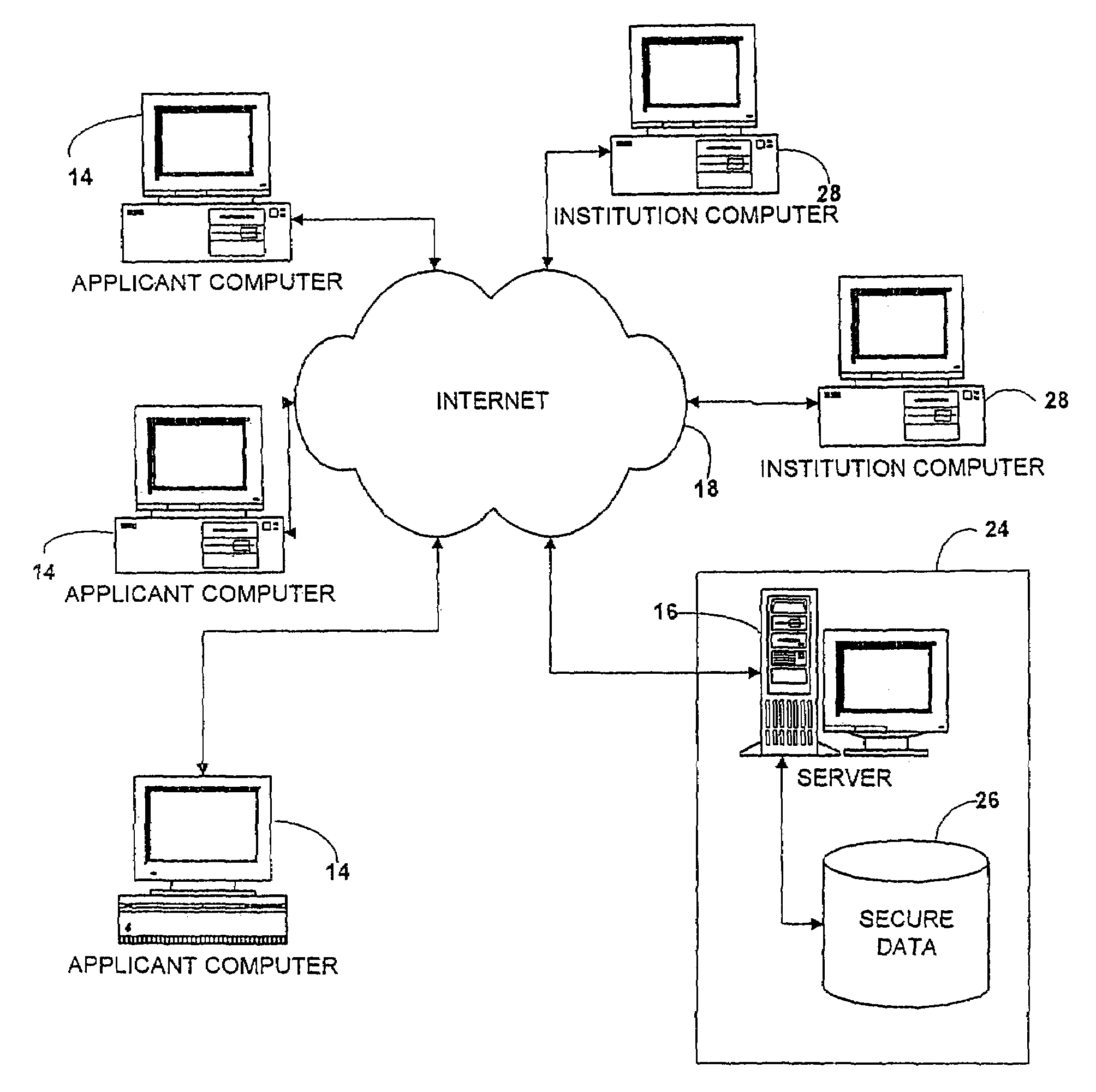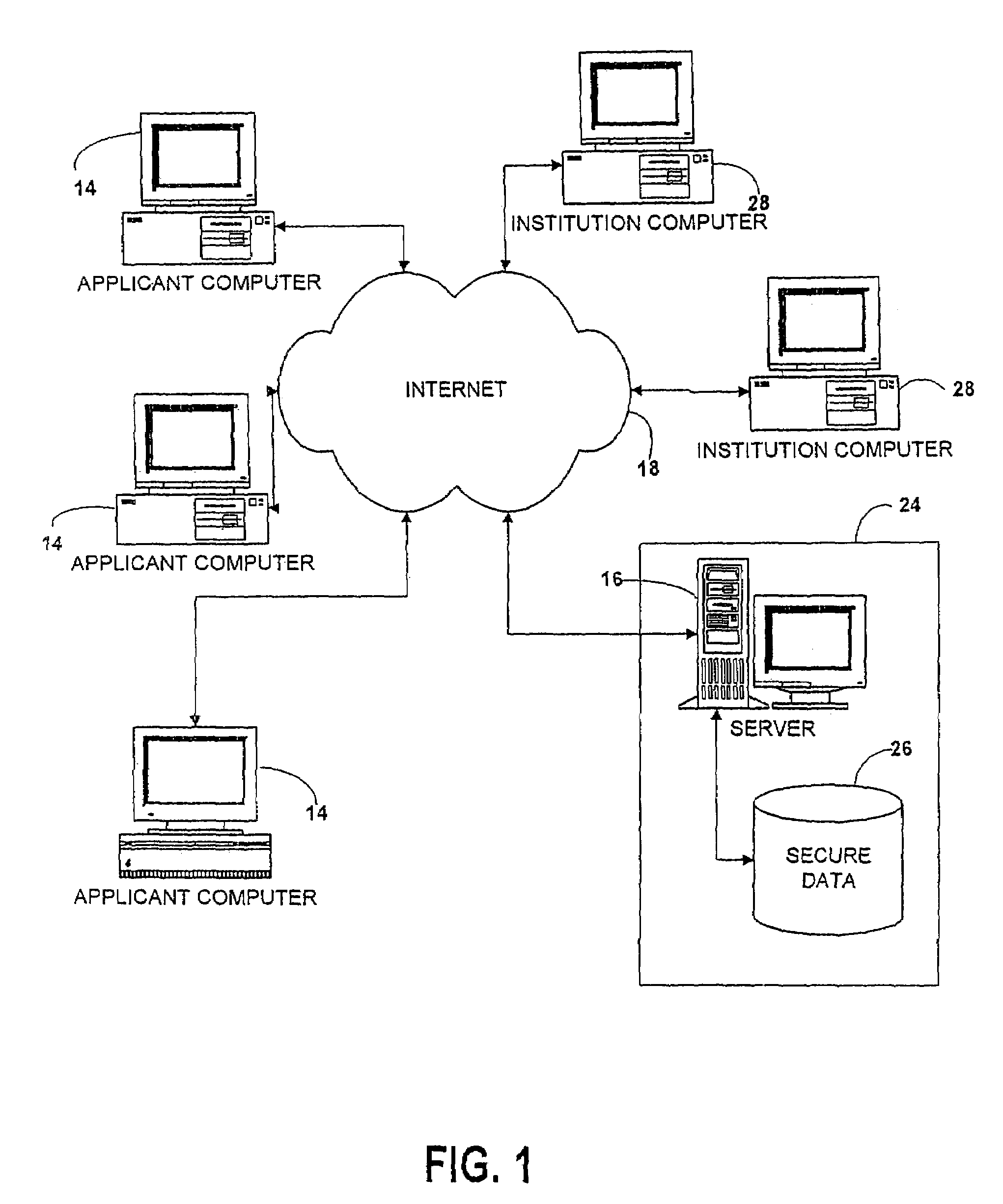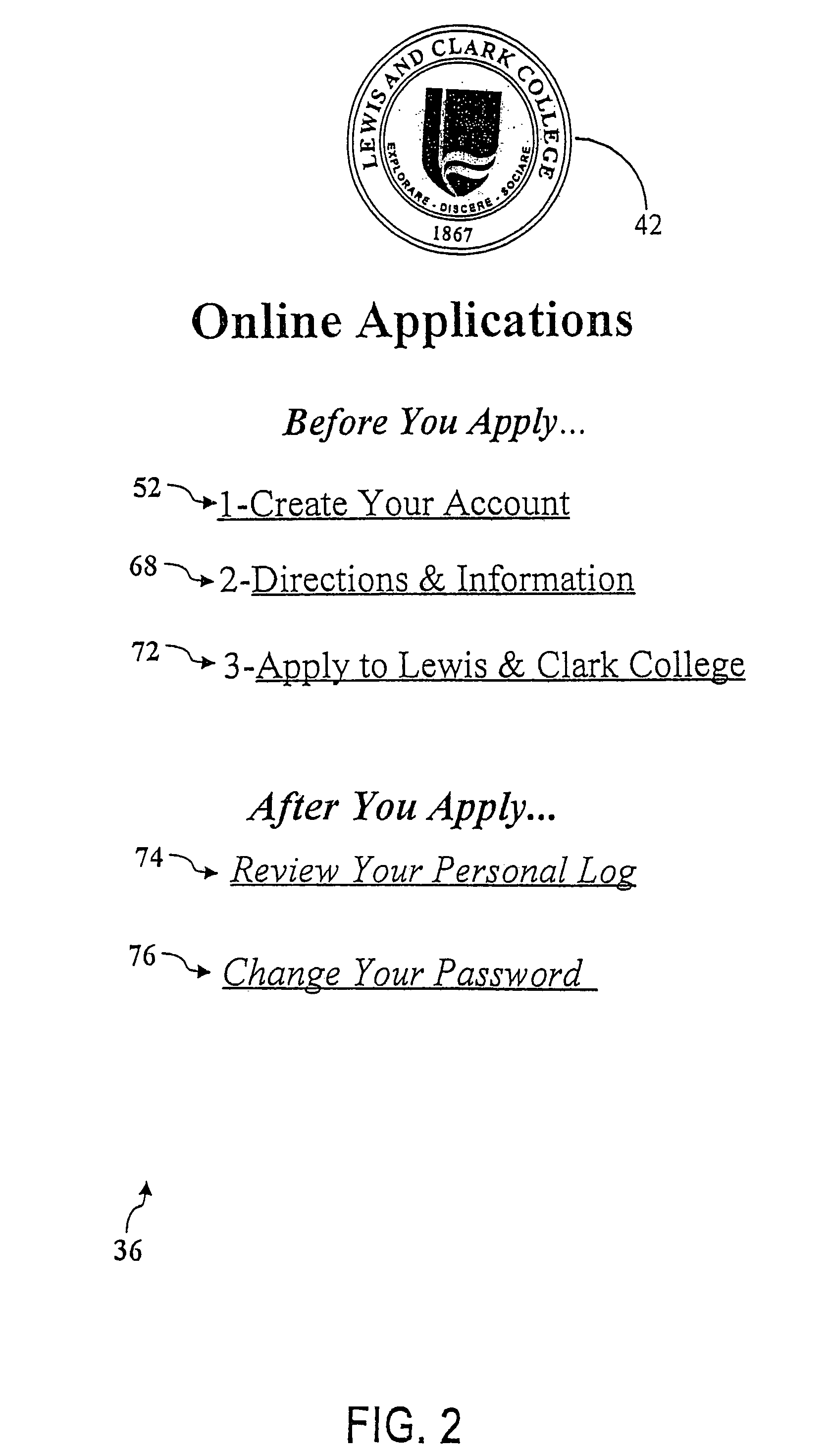Universal forms engine
a technology of universal forms and engine, applied in the field of universal forms engine, can solve the problems of inability of institutions to customize their application forms, inability of institutions to use generic application forms, and inability to change application forms, etc., and achieve the effect of facilitating access to information over the web
- Summary
- Abstract
- Description
- Claims
- Application Information
AI Technical Summary
Benefits of technology
Problems solved by technology
Method used
Image
Examples
Embodiment Construction
[0035]The system according to a preferred embodiment of the present invention comprises a forms engine that processes applications for admission to institutions. The preferred embodiment, which is operated by a third party application servicer, uses relational databases for storing information and communicates with applicants and institutions over the World Wide Web. The invention is not limited, however, to the processing of any particular type of form or to the use of any particular network or database.
Overview of a Preferred Embodiment
[0036]FIG. 1 shows multiple applicant computers 14 that communicate with a server 16 through the portion of the Internet 18 known as the World Wide Web (the Web). A typical applicant computer 14 comprises a personal computer, such as a Pentium-based personal computer using a Windows-based operating system and running a commercially available Web Browser, such as Netscape Navigator or Internet Explorer. In a preferred embodiment, applicant computers ...
PUM
 Login to View More
Login to View More Abstract
Description
Claims
Application Information
 Login to View More
Login to View More - R&D
- Intellectual Property
- Life Sciences
- Materials
- Tech Scout
- Unparalleled Data Quality
- Higher Quality Content
- 60% Fewer Hallucinations
Browse by: Latest US Patents, China's latest patents, Technical Efficacy Thesaurus, Application Domain, Technology Topic, Popular Technical Reports.
© 2025 PatSnap. All rights reserved.Legal|Privacy policy|Modern Slavery Act Transparency Statement|Sitemap|About US| Contact US: help@patsnap.com



